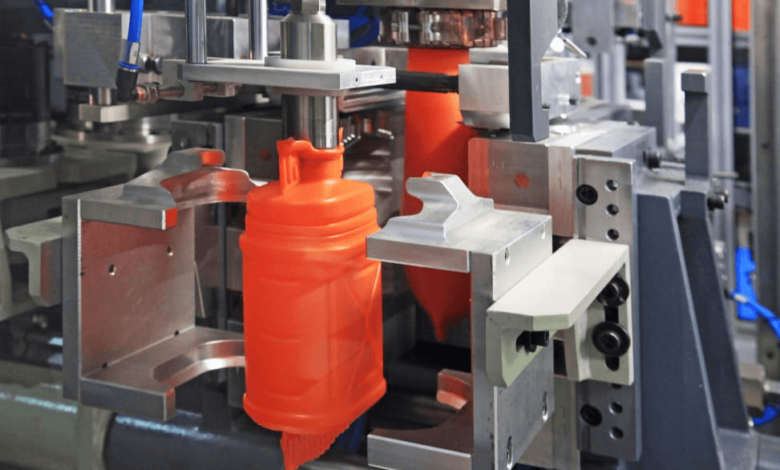Inside an Injection Molding Factory: Where Plastic Innovation Begins

Introduction
The modern world thrives on plastic products — from medical devices and automotive parts to consumer electronics and kitchen tools. Behind the mass production of these items lies the highly efficient and technologically advanced Injection Molding Factoy These specialized facilities combine engineering precision, industrial automation, and quality control to produce millions of parts with unmatched consistency.
This article takes you inside an injection molding factory to explore its inner workings, equipment, processes, benefits, challenges, and its indispensable role in modern manufacturing.
What is an Injection Molding Factory?
It is a structured environment that brings together raw materials, advanced machinery, skilled labor, and strict quality protocols to create a wide range of plastic products. The factory operates with high levels of automation, precision, and throughput to meet both high- and low-volume production needs.
Layout and Departments
A well-organized injection molding factory is divided into specific departments, each serving a crucial function in the production chain.
1. Design and Engineering Department
This is the heart of the innovation process. Engineers work on product and mold designs using advanced CAD software. The focus is on functionality, manufacturability, and cost efficiency. Mold flow simulations are often conducted to predict how molten plastic will behave inside the mold, helping avoid defects.
2. Tool Room
Here, the actual molds (also called tools or dies) are manufactured and maintained. These molds are usually made of hardened steel or aluminum and are machined with extremely tight tolerances. CNC machines, EDM (electrical discharge machining), and surface grinders are standard equipment in this area.
3. Raw Material Storage
Plastic resins, usually in pellet form, are stored in controlled environments to prevent contamination. Additives like colorants, flame retardants, or UV stabilizers are also stored here and mixed with the resins before molding.
4. Molding Floor
This is the production core. The molding floor houses multiple injection molding machines, which vary in tonnage (clamping force) depending on the size and complexity of the product. Each machine is monitored for parameters like temperature, injection pressure, cooling time, and cycle speed.
5. Quality Control
Factories often comply with ISO 9001 or industry-specific certifications to ensure product consistency and customer satisfaction.
6. Packaging and Shipping
Once products pass inspection, they are packaged according to client specifications. Some factories also handle labeling, kitting, and direct shipping to customer locations.
See also: Advanced Bookkeeping Techniques for Professionals 5626988326
Machinery and Equipment Used
An injection molding factory operates with a range of sophisticated machinery designed for efficient production and minimal downtime:
- Injection Molding Machines – Hydraulic, electric, or hybrid machines that melt and inject plastic into molds.
- Robotic Arms – Used for part removal, assembly, and packaging.
- Chillers and Thermolators – Manage mold and barrel temperatures.
- Material Dryers – Remove moisture from resins to prevent defects.
- Conveyors – Move finished parts between stations or into bins.
- Grinders and Recyclers – Reprocess rejected parts and sprues into reusable material.
The level of automation in an injection molding factory directly impacts its efficiency, labor cost, and product consistency.
Advantages of Working with an Injection Molding Factory
Partnering with a reputable injection molding factory offers multiple benefits:
1. High-Volume Production
Factories can run machines 24/7 with minimal downtime, enabling the production of millions of parts without variation.
2. Tight Tolerances
Factories achieve tolerances within microns using high-accuracy molds and strict process control.
3. Reduced Waste
Modern factories use optimized gating systems, in-process recycling, and lean manufacturing techniques to minimize material waste.
4. Cost Efficiency
Despite the upfront cost of tooling, the low per-unit cost in mass production makes injection molding an economical choice for long production runs.
5. Versatility
Factories can produce components with varying sizes, complexities, materials, and colors using multi-cavity and multi-material molds.
Challenges Faced by Injection Molding Factories
Despite their technological advancement, these factories face several challenges:
1. Tooling Costs
Tooling costs can range from thousands to hundreds of thousands of dollars.
2. Skilled Labor Shortage
Operating high-end machinery and troubleshooting defects require experienced technicians and engineers, which are sometimes hard to find.
3. Material Shortages
Dependence on global supply chains for certain plastic resins can lead to production delays during shortages or trade disruptions.
4. Defect Management
Common molding defects like sink marks, flash, warping, or short shots must be minimized through stringent process controls and mold maintenance.
Quality and Certification Standards
Injection molding factories often operate under strict regulatory environments. Common certifications include:
- ISO 9001 – General quality management system.
- ISO 13485 – Quality standard for medical devices.
- IATF 16949 – Automotive sector quality management.
- UL Certification – For fire safety and plastic flammability ratings.
Maintaining these certifications demonstrates a commitment to consistent quality and industry compliance.
Sustainability in Injection Molding Factories
As environmental regulations tighten and consumers demand greener products, factories are embracing sustainable practices:
- Use of Recycled Resins – Incorporating post-consumer or post-industrial plastic.
- Energy-Efficient Machines – Electric and hybrid machines consume less power.
- Closed-Loop Water Systems – Recycle cooling water to reduce consumption.
Conclusion
An injection molding factory is much more than a production unit—it’s a hub of innovation, precision, and industrial efficiency. From design to packaging, every element is carefully optimized to produce high-quality plastic parts that meet diverse industry needs. As global demand continues to grow, these factories are evolving with smarter technology, sustainable practices, and greater customization options.
For businesses seeking mass production with tight tolerances and design flexibility, partnering with an experienced injection molding factory can offer both economic and strategic advantages. In a world that depends on plastic for everything from medicine to mobility, these factories play a vital role in shaping the future of manufacturing.




